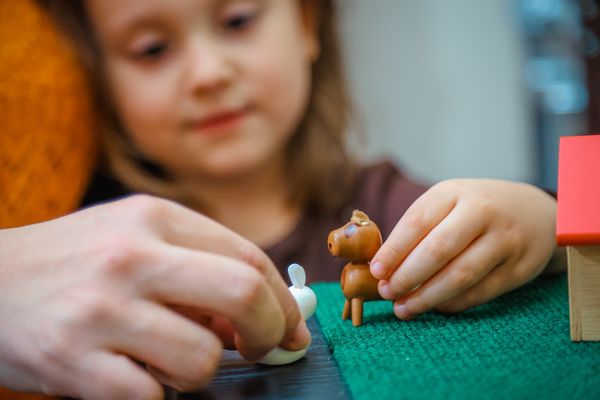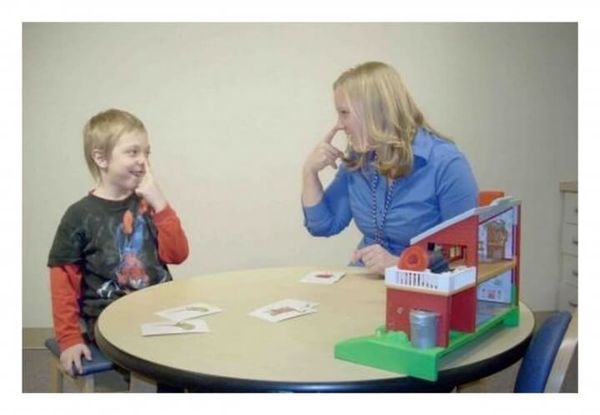Play therapy for children of preschool and school age
Psychotherapy and psychocorrection are becoming one of the most popular areas of modern medicine. More and more people are realizing the importance of preserving and maintaining the mental health of a person at any age, including preschool children and even infants. Today, there are many psychotherapeutic techniques that are used to work with children of different ages, but play therapy remains one of the most effective and in demand.
Play therapy is a psychotherapeutic method of influencing children of preschool and school age through the use of games, toys and other elements. Role-playing, which forms the basis of this therapy, helps to identify problems in the behavior, mentality or development of children, teaches ways to solve these problems and helps to restore mental and emotional health.
Play therapy can be carried out in a variety of conditions - independently, at home, in kindergartens and schools, in the office of a psychologist or psychotherapist. Many parents are somewhat wary of this method of treatment, they do not believe that play therapy for children is the most powerful way to influence the mind and feelings of a child of any age (excluding older students and adolescents, other methods of psychotherapy are used for them, although play methods can also be effective). To understand why and how play therapy affects the baby, you need to understand its basic principles of action, as well as understand what "pitfalls" this technique has.
How does it work
The game is the main activity of the child, from birth to adolescence. With its help, he receives information about the world around him, about the ways of interaction between people, objects, and also thinking, fantasy, strong-willed and other qualities are formed in the game.
Numerous studies prove that learning by playing is one of the most effective methods of interaction with children of different ages, normotypical and with developmental features.
Involving the child in the game, the specialist gets the opportunity to "look" into the inner world of the child, who unconsciously transfers his feelings, experiences or fears to the characters of the game or "loses" the situations that concern him. This technique is well known to most modern parents, who, using this simple method, determine whether the child is comfortable in kindergarten, school, among new friends, and so on. To do this, it is enough to call him to play “in the kindergarten” or “school” and carefully observe his behavior, remarks and emotions.
The goal of play therapy- help the child cope with some traumatic events, even if he does not realize or perceive them. A specialist can assess the emotional and mental state of the child and help him cope with negative emotions, fears, anxiety, incomprehensible but disturbing situations, other feelings, or teach him acceptable ways to express his emotions, interact with others and perform certain everyday skills.
The basic rule of play therapy is its comfort for the child. He should feel confident and free, the only way to find out about his inner state and help him cope with problems.

Who can help
This method is universal; there is also play therapy for adults who, with its help, also “live through” unpleasant emotions or get rid of stress. But if “home play therapy” can be carried out with any child, then professional therapy requires a visit to a specialist, who, as a rule, “works” with certain problems, since it is with their presence that play therapy is most effective. Thus, play therapy with anxious children has its own characteristics, as well as play therapy with children with developmental delays or psychological trauma.
These can be mental and behavioral disorders, manifested by:
- aggressiveness,
- fears
- Difficulty communicating with peers and adults
- Poor academic performance
- stuttering
- Enuresis
- other problems.
Such behavioral disorders and disorders are faced by many children who have experienced stress due to the divorce of their parents, the loss of a loved one, moving, abuse, witnessing some kind of traumatic event, and so on.
Play therapy with anxious children helps not only to reduce the level of negative emotions, but to find their source, and this is sometimes much more important - in cases of domestic violence, child abuse in educational institutions, and so on.
Play therapy is used as a method of correcting behavior and teaching new skills to children with developmental disabilities and impaired social adaptation. This method is used for all types, excluding deep autism and schizophrenia. With the help of play therapy, children with developmental disabilities instill the most important everyday skills, learn how to interact with other people, as well as how to express their emotions. But the therapy of such children should be carried out only by a specialist with education and work skills. On their own, parents and persons involved in the development of the child can carry out elements of play therapy in the form of teaching household skills, but not corrective work.
Today, play therapy is recommended for use from 2 years of age. Play therapy in kindergarten helps to solve the problems of child adaptation, teaches children interaction and communication skills. It can be carried out by both a child psychologist and an educator who has received an appropriate education.

Types and features
Sigmund Freud is considered to be the founder of game therapy as a psycho-corrective method. He used it as an analysis of what is happening with the child, using the method of free associations, and this method was not widely used, unlike play therapy according to the method of M. Klein, and later Anna Freud, they considered it as an opportunity to influence the child's psyche, using toys for this , associative games and other techniques.
In the book of G.L. Landreth "Game therapy: the art of relationships" describes all the stages of the formation of this type of therapy, describes the principles of game therapy, methods and material for the game. It may be of interest to parents whose children are going to attend play therapy or are already attending it. And also for those who want to use this method on their own.
Today, play therapy is a popular and widely used method. She has several varieties, types and many independent techniques. According to the method of influence, they distinguish:
- Non-directive play therapy is spontaneous, client-centered. Using this type of therapy, the specialist does not try to somehow influence or change the behavior or emotions of the child. He is fully involved in the game, he can gently guide, but at the same time follows the child, creating the most favorable conditions for him.
- Directive - the specialist takes the leading role in the game. He guides the child, teaches him the basics of behavior, tells him how and what to do, and takes on the role of organizer and leader of the game.
Depending on the type of games and the material used, structured and unstructured game therapy are distinguished.
Structured - the game uses certain images: toys, puppet theater, images of people, models of animals, food, and so on. Playing with these objects, the child can express his attitude towards them, learn how to handle these objects or build his own game, taking into account the proposed elements.
Unstructured play involves physical activity and the use of materials such as sand, water, clay, plasticine, paints, and so on. Such games help with the child's refusal to cooperate, his unwillingness or inability to express his feelings, and also when it is impossible (for the child) to express feelings and emotions that overwhelm him, for example, anger at parents or resentment.
Depending on the number of children, individual and group play therapy is distinguished.
Individual is considered more effective, it is recommended to use it when working with the child's emotions, his behavior or attitude. Also, in order to treat an emotional or behavioral disorder, only individual sessions are used.
Group play therapy helps to improve relationships in a team, teach social skills, and can also be used to correct fears and anxiety.
Play Therapy: Specialist or Mom?
Should I take classes on my own or seek help from a specialist? Today, many parents face such a choice, classes with professional psychologists promise to be more effective, but for this it is necessary to allocate special time and money to attend classes. You can practice play therapy on your own at any time, with the whole family and completely free of charge. So what should you choose?
There is no unequivocal answer to this question, each parent decides it on his own, but if you are going to do play therapy with your child or several children, it is imperative to study at least the basics of this technique and follow the basic rules:
- The game should begin and be carried out only at the request of the child, any coercion to play is unacceptable. Parents can offer time, involve other family members in the game, but the main thing is the desire of the child and his positive attitude towards the game. Without this, there is no point in conducting classes.
- Compliance with the regime of games - depending on the age of the child, play therapy can last from 5 to 30 minutes. It is also important that play therapy be gradual and unobtrusive. There is no need to offer the child all the available games at once or after finishing one, immediately start another. It is best to devote several days to one game.
- Following the child in the game without forbidding or imposing is the most difficult skill for all parents. In play therapy, they should follow the child, not trying to forbid or react negatively to something. Even if a child utters obscene words in the game, beats toys and promises to kill everyone, this is a reason to carefully listen to his words and understand why he utters them. It is strictly forbidden to scold and punish a child for what and how he plays. During the game, the parent should gently explain why this behavior is unacceptable and show him other ways to interact.



